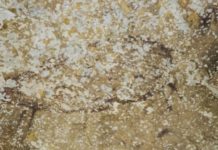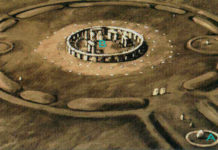As we continue to look for more and more evidences of our ancestors, more questions prop up. How did they live, their lifestyles, the tools which they used, why some of them were so advanced that are still marvelled by modern science. What was the reason behind their sudden disappearance from certain places? Possibly the places where they used to stay could provide some answers to these questions. Here is an interesting article by Jason Daley featured in Discover Magazine about the discovery of possibly what could be the earliest human cave art.
A novel dating technique suggests that some ancient cave art is considerably older than previously realized—so old that it may have been created not by modern humans but by their predecessors, the Neanderthals. Measuring the age of the cave paintings found across Europe is confounding because most images are made from inorganic pigments that leave few clues. In June 2012, archaeologist Alistair Pike, now at the University of Southampton, described a clever way to get answers: Analyze the breakdown of radioactive uranium-234 embedded in the natural mineral crust that forms on top of the artworks.
Pike and his team applied the technique to drawings from 11 caves in the Cantabria and Asturias regions of northern Spain. They pegged the age of one illustration — a red disk in El Castillo cave—at 40,800 years old, making it the oldest known piece of European art by more than 5,000 years.
That is almost exactly the time when Homo sapiens first arrived in Europe. If modern humans made the drawings, then they must have arrived with artistic proclivities already developed, although there is no such cave art in Africa. Another possibility is that the art is not the work of human hands. Previous evidence has hinted that Neanderthals had a highly complex culture. Pike’s cave art studies could bolster the case that we are not the only species with an urge toward self-expression.
This remarkable discovery surely has excited many archaeologists around the world. These are the discoveries which give a world of encouragement to these people seeking answers to so many unsolved mysteries. Many more mysteries are yet to be solved by science and one which still remains unsolved to a certain extent is the history of our ancestors. Even though there are a lot of evidences found, we are still unsure about many things of our predecessors. But hopefully one day, the puzzle will be solved.
-end-

Source
- Discover Magazine, Jason Daley



































